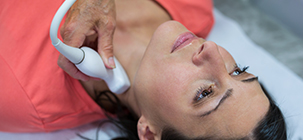Carotid Doppler Test
Jump
to Tests
Carotid ultrasound produces images of the carotid arteries, which carry blood from the heart to the brain. Plaques, made of fat, cholesterol, calcium, and other substances circulating in the blood, narrow the carotid arteries. It is frequently done to examine the narrowing (stenosis) of the carotid artery, a condition that elevates the risk of Stroke.
Carotid Doppler is recommended for patients preparing for coronary artery bypass surgery. Some risk factors for which the test is done are as follows:
- Diabetes
- Elevated blood cholesterol
- Hypertension
- Recent transient ischemic attack (TIA) or stroke
- Unusual sounds in the carotid arteries were detected using a stethoscope
- Coronary artery disease
- Hardening of the arteries
- A family history of stroke or heart disease
Carotid Doppler test helps to see and evaluate:
- blockages to blood flow (such as clots)
- narrowing of vessels
- tumors and congenital vascular malformations
What happens during Carotid Doppler Test?
You may require to lie flat on the exam table. A transparent gel will be applied to a small ultrasound probe and positioned on one side of your neck. Some slight pressure is applied to get clear images. Images of the arteries will be recorded, and various measurements will be taken. You won’t feel any discomfort during the examination. If you feel pain or discomfort, immediately inform the cardiologist.
Instructions:
- Little or no special preparation is required for this procedure.
- Leave jewelry at home and wear loose, comfortable clothing.
- A loose-fitting, open-necked shirt or blouse is ideal.




